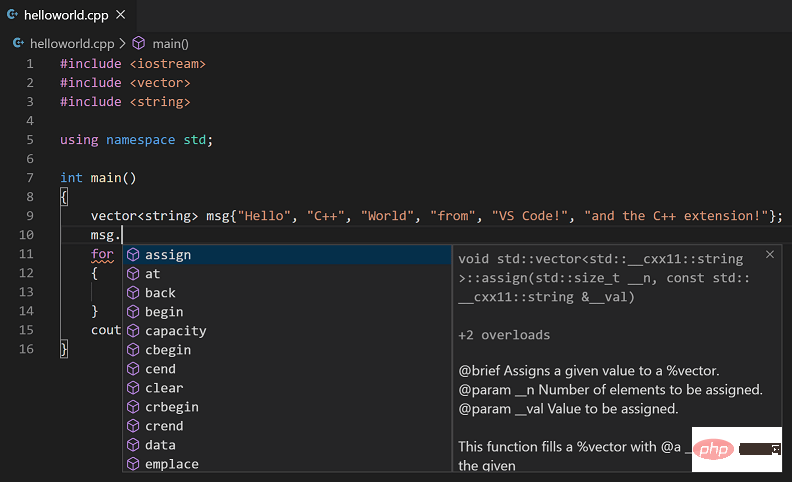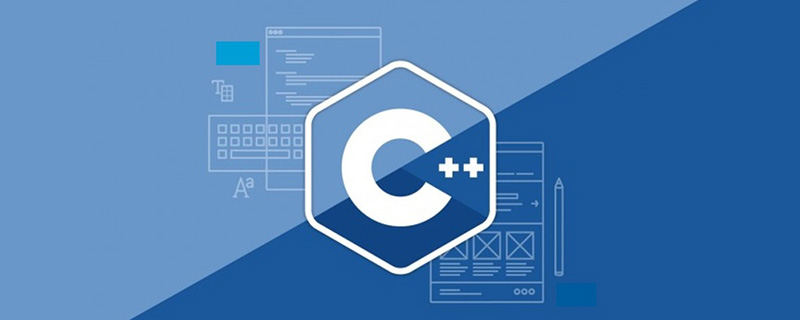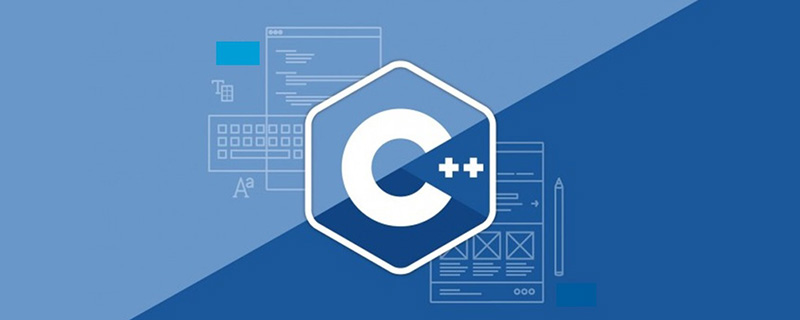 Backend Development
Backend Development C++
C++ C++ software testing and debugging function implementation skills in embedded system development
C++ software testing and debugging function implementation skills in embedded system development
C Techniques for implementing software testing and debugging functions in embedded system development
Embedded systems play an increasingly important role in today's technology field. They are widely used in smart homes, automobiles, medical equipment and other fields. However, in the development process of embedded systems, software testing and debugging are essential links, because errors in embedded systems may lead to serious consequences. This article will introduce how to use C language to implement software testing and debugging functions of embedded systems, and provide some code examples.
1. Test framework selection
In embedded system development, it is very important to choose a suitable testing framework. Generally speaking, embedded systems have limited resources, so a lightweight testing framework needs to be selected. The following are three commonly used C testing frameworks:
- Google Test: Google Test is a powerful C testing framework that provides rich assertion and test case management functions. Google Test's code coverage tool helps developers evaluate the coverage of test cases.
- Catch2: Catch2 is a concise and powerful C testing framework that supports development methods such as BDD (behavior-driven development) and TDD (test-driven development). Catch2 features ease of use and extensibility.
- CppUTest: CppUTest is a C testing framework specially designed for embedded system development. It supports Mock and Stub technology and can easily simulate external hardware and software components.
It is very important to choose a testing framework that suits your project. This article will use Google Test as an example to introduce related testing and debugging skills.
2. Unit testing
- Design of program structure
Before conducting unit testing, we need to ensure the testability of the code, which requires that the program The design of the structure has good modular characteristics. Modular code is easier to unit test. In C, we can use classes and namespaces to organize code for easy unit testing.
The following is a simple example: a serial communication module in an embedded system.
class SerialPort
{
public:
SerialPort(int portNum);
void open();
void close();
void send(const char* data, int length);
void receive(char* buffer, int length);
};
namespace EmbeddedSystem
{
void foo()
{
SerialPort port(1);
port.open();
port.send("Hello, world!", 13);
port.close();
}
}- Writing of unit tests
Unit testing is a test that verifies the smallest testable unit in the program. In C, we can write test cases using Google Test framework. The following is sample code for testing the open and close functionality of the SerialPort class:
#include <gtest/gtest.h>
TEST(SerialPortTest, OpenAndClose)
{
SerialPort port(1);
port.open();
ASSERT_TRUE(port.isOpen());
port.close();
ASSERT_FALSE(port.isOpen());
}
int main(int argc, char** argv)
{
::testing::InitGoogleTest(&argc, argv);
return RUN_ALL_TESTS();
}This code defines a test suite named SerialPortTest, which contains a test case named OpenAndClose. In the test case, we create a SerialPort object, call the open function to open the serial port, and use ASSERT_TRUE and ASSERT_FALSE assertions to verify whether the status of the serial port is correct.
- Compile and run the test code
Before conducting unit testing, we need to ensure that the Google Test framework has been configured correctly. Before compiling the test code, we need to include the Google Test header files and library files and link them to the test code. Compiling and running the test code can be done with the following command:
g++ test.cpp -o test -lgtest -lgtest_main -lpthread ./test
If all goes well, we will see the output of the test results.
3. Integration testing
In addition to unit testing, integration testing is also a very important part. Integration testing is usually used to verify that the interactions between various modules are normal. In embedded system development, it is often necessary to test the interaction between hardware and external devices. The following is an example of an integration test: testing the communication between the serial communication module in the embedded system and external devices.
#include <gtest/gtest.h>
class ExternalDevice
{
public:
void send(const char* data, int length)
{
// 外部设备的通信代码
}
void receive(char* buffer, int length)
{
// 外部设备的收信代码
}
};
TEST(SerialPortTest, SendToExternalDevice)
{
SerialPort port(1);
port.open();
ExternalDevice device;
char buffer[100];
port.send("Hello, device!", 14);
device.receive(buffer, 14);
ASSERT_STREQ(buffer, "Hello, device!");
port.close();
}
int main(int argc, char** argv)
{
::testing::InitGoogleTest(&argc, argv);
return RUN_ALL_TESTS();
}In this example, in addition to testing the functionality of the serial port itself, we also test the communication between the serial port and external devices. We simulated the send and receive functions of an external device, sent data to the external device through the serial port, and verified whether the external device received the data correctly.
4. Debugging skills
In embedded system development, debugging is a very important part. The following are some common debugging tips:
-
Use assertions: During the development process, we can use assertions to verify whether the assumptions in the program are true. If the assertion fails, program execution will be terminated and the corresponding error message will be output.
assert(x > 0); // 如果x小于等于0,程序将中止
-
Output debugging information: Use cout and cerr statements to output debugging information to help us understand the program execution status.
cout << "Debug information: " << x << endl; cerr << "Error occurred!" << endl;
-
Use debugger: During the debugging process of embedded systems, using a debugger can more conveniently observe the execution status of the program and the values of variables, and detect memory errors.
gdb binaryFile // 启动调试器并加载可执行文件
Summary
This article introduces some techniques for using C language to implement software testing and debugging functions of embedded systems. In the development of embedded systems, good testing and debugging are important guarantees to ensure the normal operation of system functions. By choosing the right testing framework and adopting appropriate testing strategies, we can improve software quality and reduce the occurrence of errors. At the same time, using tools such as assertions, output debugging information, and debuggers can help us better locate and solve problems and improve development efficiency.
I hope this article can provide some help for your software testing and debugging in embedded system development.
The above is the detailed content of C++ software testing and debugging function implementation skills in embedded system development. For more information, please follow other related articles on the PHP Chinese website!
 Windows 11 系统下的五款最佳免费 C++ 编译器推荐Apr 23, 2023 am 08:52 AM
Windows 11 系统下的五款最佳免费 C++ 编译器推荐Apr 23, 2023 am 08:52 AMC++是一种广泛使用的面向对象的计算机编程语言,它支持您与之交互的大多数应用程序和网站。你需要编译器和集成开发环境来开发C++应用程序,既然你在这里,我猜你正在寻找一个。我们将在本文中介绍一些适用于Windows11的C++编译器的主要推荐。许多审查的编译器将主要用于C++,但也有许多通用编译器您可能想尝试。MinGW可以在Windows11上运行吗?在本文中,我们没有将MinGW作为独立编译器进行讨论,但如果讨论了某些IDE中的功能,并且是DevC++编译器的首选
 C++报错:变量未初始化,应该如何解决?Aug 21, 2023 pm 10:01 PM
C++报错:变量未初始化,应该如何解决?Aug 21, 2023 pm 10:01 PM在C++程序开发中,当我们声明了一个变量但是没有对其进行初始化,就会出现“变量未初始化”的报错。这种报错经常会让人感到很困惑和无从下手,因为这种错误并不像其他常见的语法错误那样具体,也不会给出特定的代码行数或者错误类型。因此,下面我们将详细介绍变量未初始化的问题,以及如何解决这个报错。一、什么是变量未初始化错误?变量未初始化是指在程序中声明了一个变量但是没有
 C++编译错误:未定义的引用,该怎么解决?Aug 21, 2023 pm 08:52 PM
C++编译错误:未定义的引用,该怎么解决?Aug 21, 2023 pm 08:52 PMC++是一门广受欢迎的编程语言,但是在使用过程中,经常会出现“未定义的引用”这个编译错误,给程序的开发带来了诸多麻烦。本篇文章将从出错原因和解决方法两个方面,探讨“未定义的引用”错误的解决方法。一、出错原因C++编译器在编译一个源文件时,会将它分为两个阶段:编译阶段和链接阶段。编译阶段将源文件中的源码转换为汇编代码,而链接阶段将不同的源文件合并为一个可执行文
 如何优化C++开发中的文件读写性能Aug 21, 2023 pm 10:13 PM
如何优化C++开发中的文件读写性能Aug 21, 2023 pm 10:13 PM如何优化C++开发中的文件读写性能在C++开发过程中,文件的读写操作是常见的任务之一。然而,由于文件读写是磁盘IO操作,相对于内存IO操作来说会更为耗时。为了提高程序的性能,我们需要优化文件读写操作。本文将介绍一些常见的优化技巧和建议,帮助开发者在C++文件读写过程中提高性能。使用合适的文件读写方式在C++中,文件读写可以通过多种方式实现,如C风格的文件IO
 C++编译错误:无法为类模板找到实例化,应该怎么解决?Aug 21, 2023 pm 08:33 PM
C++编译错误:无法为类模板找到实例化,应该怎么解决?Aug 21, 2023 pm 08:33 PMC++是一门强大的编程语言,它支持使用类模板来实现代码的复用,提高开发效率。但是在使用类模板时,可能会遭遇编译错误,其中一个比较常见的错误是“无法为类模板找到实例化”(error:cannotfindinstantiationofclasstemplate)。本文将介绍这个问题的原因以及如何解决。问题描述在使用类模板时,有时会遇到以下错误信息:e
 iostream头文件的作用是什么Mar 25, 2021 pm 03:45 PM
iostream头文件的作用是什么Mar 25, 2021 pm 03:45 PMiostream头文件包含了操作输入输出流的方法,比如读取一个文件,以流的方式读取;其作用是:让初学者有一个方便的命令行输入输出试验环境。iostream的设计初衷是提供一个可扩展的类型安全的IO机制。
 C++中的信号处理技巧Aug 21, 2023 pm 10:01 PM
C++中的信号处理技巧Aug 21, 2023 pm 10:01 PMC++是一种流行的编程语言,它强大而灵活,适用于各种应用程序开发。在使用C++开发应用程序时,经常需要处理各种信号。本文将介绍C++中的信号处理技巧,以帮助开发人员更好地掌握这一方面。一、信号处理的基本概念信号是一种软件中断,用于通知应用程序内部或外部事件。当特定事件发生时,操作系统会向应用程序发送信号,应用程序可以选择忽略或响应此信号。在C++中,信号可以
 c++数组怎么初始化Oct 15, 2021 pm 02:09 PM
c++数组怎么初始化Oct 15, 2021 pm 02:09 PMc++初始化数组的方法:1、先定义数组再给数组赋值,语法“数据类型 数组名[length];数组名[下标]=值;”;2、定义数组时初始化数组,语法“数据类型 数组名[length]=[值列表]”。


Hot AI Tools

Undresser.AI Undress
AI-powered app for creating realistic nude photos

AI Clothes Remover
Online AI tool for removing clothes from photos.

Undress AI Tool
Undress images for free

Clothoff.io
AI clothes remover

AI Hentai Generator
Generate AI Hentai for free.

Hot Article

Hot Tools

VSCode Windows 64-bit Download
A free and powerful IDE editor launched by Microsoft

SublimeText3 Mac version
God-level code editing software (SublimeText3)

EditPlus Chinese cracked version
Small size, syntax highlighting, does not support code prompt function

MantisBT
Mantis is an easy-to-deploy web-based defect tracking tool designed to aid in product defect tracking. It requires PHP, MySQL and a web server. Check out our demo and hosting services.

mPDF
mPDF is a PHP library that can generate PDF files from UTF-8 encoded HTML. The original author, Ian Back, wrote mPDF to output PDF files "on the fly" from his website and handle different languages. It is slower than original scripts like HTML2FPDF and produces larger files when using Unicode fonts, but supports CSS styles etc. and has a lot of enhancements. Supports almost all languages, including RTL (Arabic and Hebrew) and CJK (Chinese, Japanese and Korean). Supports nested block-level elements (such as P, DIV),





